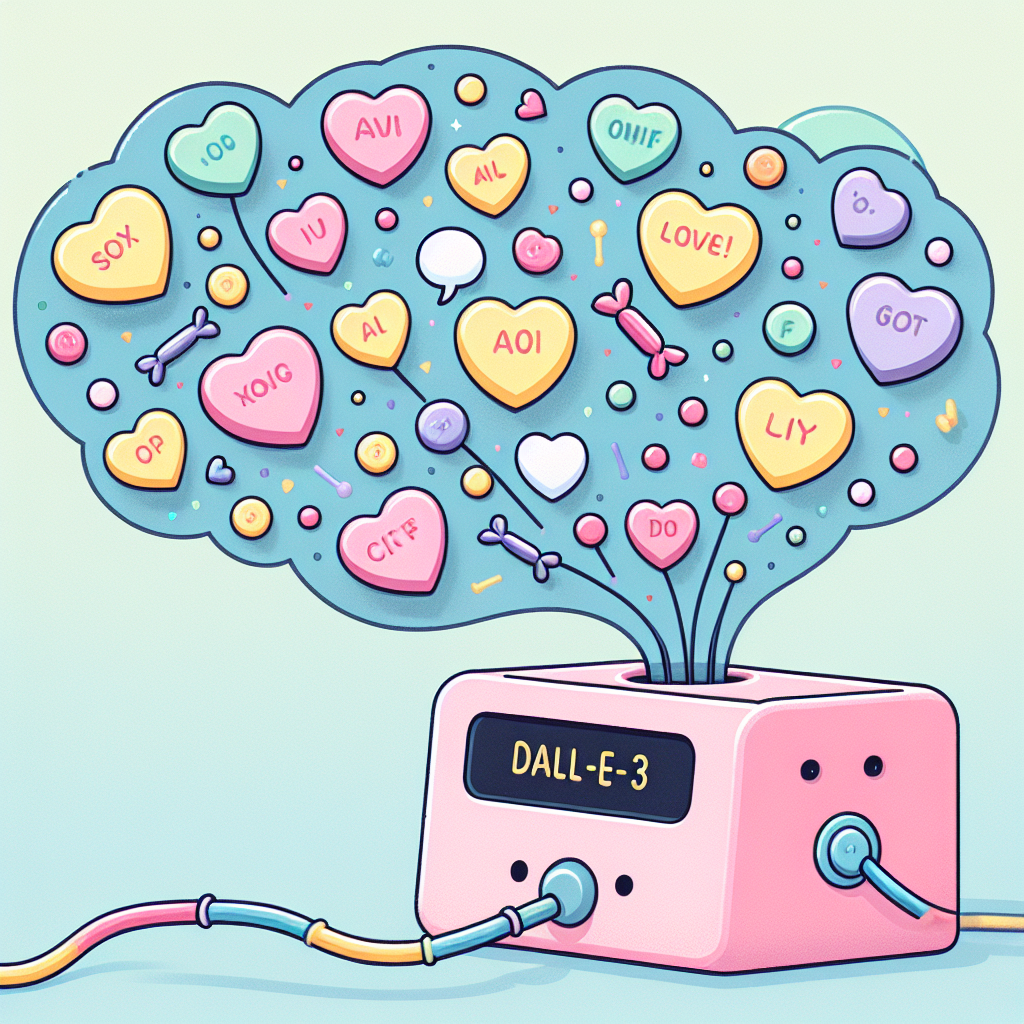Hey there, AI enthusiasts and tech fans! 🎉
Today, I want to share a fun experiment I’ve been dabbling with: generating candy heart messages using machine learning. If you’re like me, you’ve probably wondered how far we’ve come since those early days of text-generating neural networks. Well, buckle up because we’re diving into the sweet and quirky world of AI-generated candy hearts!
So, picture this: back in the day, neural networks could barely string together coherent short messages. Fast forward to now, and we’re working with algorithms like DALL-E 3, which can generate images with text. But, there’s a catch – while we’ve drastically improved the computational power, some issues are still surprisingly familiar.
The Prompt and The Process
To kick things off, I used the following prompt: “Please generate a grid of candy conversation hearts on a plain white background, each heart displaying a longer than usual message.” The outcome? A mixed bag.
At first glance, the generated candy hearts look pretty impressive. You’d think, “Wow, these AIs have nailed it!” But, upon closer inspection, something seems a bit off. The messages start looking like random clusters of pixels vaguely resembling text rather than coherent candy heart messages. It’s as if DALL-E 3 is saying, “Here’s something heart-shaped and pastel-colored. Happy now?”
Text Challenges with DALL-E 3
One thing I’ve found consistently curious is how the readability of text suffers when asking for more content in an image. When I reduced the number of hearts to just four, the readability improved significantly, but the coherence? Not so much. The messages might be crisp, but they often hover on the edge of nonsense.
Here’s what my prompt looked like for fewer hearts: “Please generate an image of four candy conversation hearts on a plain white background, each displaying a unique valentine’s message.” Despite the seemingly straightforward request, the AI still struggled with crafting coherent text.
Why So Weird?
This got me thinking – why does coherent text trip up image-generating algorithms like DALL-E 3? One theory is that generating legible text within an image is an inherently complex task for these models. But there’s an amusing possibility I can’t shake off. When searching for “candy hearts with messages,” I stumbled upon images from my past AI Weirdness experiments with candy heart messages. It’s highly plausible that some of this whimsical data made its way into DALL-E 3’s training set. Just imagine the AI drawing inspiration from my earlier quirky outputs!
Embracing the Quirkiness
When experimenting further with the prompt “quirky, AI-style messages,” the results were amusingly similar to my initial grid. It’s a perfect reminder of how far we’ve come yet how delightfully unpredictable AI can still be.
And because I can’t resist sharing more, here’s some bonus content: additional candy hearts from my recent runs! These little experiments keep me entertained and curious about what’s next for AI image and text generation.
So, there you have it – a sweet exploration into the evolving world of AI-generated imagery. What do you think about these developments? Have you tried any similar experiments? Drop your thoughts in the comments below; I’d love to hear about your experiences with AI and your crazy outputs too!
Until next time, keep experimenting and stay curious! 🚀💡🍭
